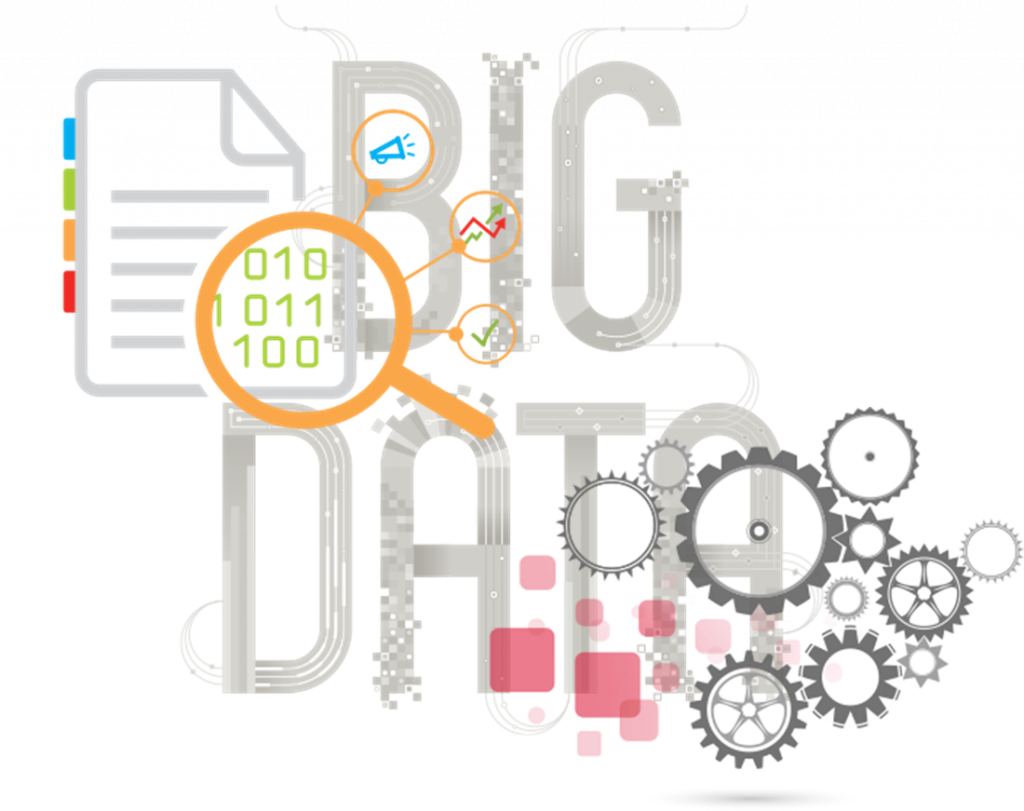Remember the “good old days” when we thought we were being smart and safe? Looking back, we did some pretty silly things. George W. Bishop recalls the following story, “There was a man who owned a small trash-removal service which consisted of a truck, a man, and two children. The youngsters would tramp down the load and then lay on top to keep it from blowing away. One day a stranger in town was driving down the road and saw the truck with the children, lying on top as usual, holding down the trash. ‘Good heavens,’ he remarked, ‘someone is throwing away two perfectly good children.’”[1] The point I’m trying to make is that we all understand the wastefulness of throwing away, or failing to take advantage of, anything that remains useful. Yet there are many businesses wasting perfectly good data. Venkat Viswanathan, Founder and Chairman of LatentView Analytics, explains, “It is easy to build solutions that leverage the power of analytics, but if they are not used, then the solutions are a waste.”[2] The World Economic Forum has declared data a valuable resource like oil or gold; however, like oil or gold refinement is required to obtain data’s full value. That refinement comes in the form of advanced analytics.
The benefits of advanced analytics
The staff at CIO Review observes, “Big data is not a unique term; it is a concept that has been there for many years now. The innovations in technology have altered the rules in terms of big data. Advanced software systems are massively reducing analytics time and providing companies with the ability to make quick decisions, increasing revenue, reducing costs, and stimulating growth.”[3] Three of the benefits the staff identifies for brands are: Improving focused and targeted campaigns; helping develop innovative products; and, identifying potential risks. The benefits of big data analytics are often unique to the economic sector in which they are used. For example, a brand will find targeted marketing useful but a manufacturer may find predictive maintenance more useful. Business leaders need to understand what kinds of challenges advanced analytics can help them address before they launch on implementing analytic solutions.
One of the most important benefits of advanced analytics is augmenting and improving corporate decision-making. Bain analysts, Michael C. Mankins and Lori Sherer (@lorisherer), assert if you can improve a company’s decision making you can dramatically improve its bottom line. They explain, “We know from extensive research that decisions matter — a lot. Companies that make better decisions, make them faster and execute them more effectively than rivals nearly always turn in better financial performance. Not surprisingly, companies that employ advanced analytics to improve decision making and execution have the results to show for it.”[4] Becoming a data-driven company requires top-down commitment.
Sri Raghavan (@sraghavan24), a self-proclaimed recovering Data Scientist, writes, “Although it’s becoming critical for enterprises to mine data and leverage insights from data analytics, desired results will not come to fruition unless the organization is committed from the top-down to following a data-forward mindset. This means understanding the unique ways that data analytics can strengthen the bottom line as well as committing to making company decisions based on insights from concrete data, rather than on fleeting industry trends or the opinion of one company leader.”[5] He adds, “Data is the one essential asset in the company that can drive innovation and fend off disruption now and in the future. If a company truly wants to become a competitive enterprise for the long-term, they must utilize data strategically and understand how to maximize the benefits.”
Turning big data into smart data
As noted at the beginning of this article, data lying fallow in a database is as useless as gold lying fallow in the ground. Dzianis Lukashevich, director of platforms and solutions at Analog Devices, explains, “The question as to how exactly this potential can be extracted keeps arising — after all, the systems and architectures for data processing are becoming more and more complex, and the number of sensors and actuators is constantly increasing. Only with relevant, high quality, and useful data — smart data — can the associated economic potential be unfolded.”[6] Whenever you read or hear terms like “smart” or “intelligent,” you can be reasonably sure some type of cognitive technology is being discussed. Smart data is a case in point.
Pervinder Johar (@PervinderJohar), CEO of Blume Global, explains, “Humans simply do not have the capacity to analyze these large volumes of big data — there just aren’t enough data scientists to make it happen. Smart data, however, is a different story: It’s the difference between a list of numbers and truly actionable insights, recommendations and, as users gain trust, automated actions that ultimately drive improved efficiencies, optimized operations, increased revenues and decreased costs. … AI provides tremendous potential to convert big data — RFID and GPS location data, point-of-sale transactional data and third-party information related to weather and traffic — to smart data.”[7] When selecting the analytics platform to use, Raghavan suggests companies look for the following key features:
Sustainability: “Enterprise leaders must look for more sustainable choices to avoid company dollars being needlessly spent on solutions that fail to generate results or positive change. Sustainability is not just a trend; it’s the future of business, and it requires that companies make coordinated decisions that balance overall business improvement with long-term efficacy. Many businesses have opened their organizations up to data silos to be agile and match the industry’s pace. But this creates a barrier, making any sense of cohesion unreachable, which often results in misaligned data, inaccuracies, and serious governance and compliance issues. A sustainable balance between moving quickly and thinking carefully is imperative for long-term success in analytics.”
Scalability, Flexibility, and Adaptability: “Although a company’s executives may think they have a good idea of where a company will be in the next five to ten years based on historical data and strong internal priorities, things can change in an instant, as we’ve seen time and again in the business world. Global recessions, as well as industry booms, may lie at separate sides of the possibility spectrum, but it’s possible for the economy, as well as a company’s personal health, to jump back and forth between these points several times over the course of a decade. Nobody knows what the future holds, so it is imperative to invest in an analytics program that prioritizes scalability, flexibility, and adaptability to accommodate the peaks and troughs of your company’s future path.” For example, the Enterra Global Insights and Optimization System™, powered by the Enterra Cognitive Core™, was developed to help companies understand, in near-real-time, how the world is changing around them.
Ease of Use, Especially with Compliance and Regulations: “A company’s analytics program is only as strong as its adoption rate within a company. If a tool is too difficult to implement, understand, or use, it cannot be successful in the short-term or long-term. Introducing too many silos and red tape within individual departments reduces self-service capability, often making way for frustration and reducing morale.”
Those are excellent characteristics to keep in mind.
Concluding thoughts
Lukashevich concludes, “Collecting all possible data and storing them in the cloud in the hopes that they will later be evaluated, analyzed, and structured is still a widespread, but not particularly effective approach.” In fact, unused data is wasted data. Companies need to determine which data is important for them to collect, store, and analyze. Anything more or less results in underperforming solutions. Once the right data is identified, cognitive technologies can help ensure it’s not wasted.
Footnotes
[1] George W. Bishop, Jr., Readers’ Digest, December 1976.
[2] Venkat Viswanathan, “Are You Wasting Perfectly Good Data?” IndustryWeek, 13 January 2020.
[3] Staff, “What are the Advantages of Incorporating Big Data Analytics?” CIO Review, 28 July 2020.
[4] Michael C. Mankins and Lori Sherer, “Creating value through advanced analytics,” Bain Brief, 11 February 2015.
[5] Sri Raghavan, “Investing in Analytics for the Decade Ahead,” Dataversity, 3 August 2020.
[6] Dzianis Lukashevich, “Embedded AI Algorithms—Going from Big Data to Smart Data,” Embedded Computing Design, 21 May 2020.
[7] Pervinder Johar, “How AI Makes Big Data Smarter,” Forbes, 23 March 2020.





